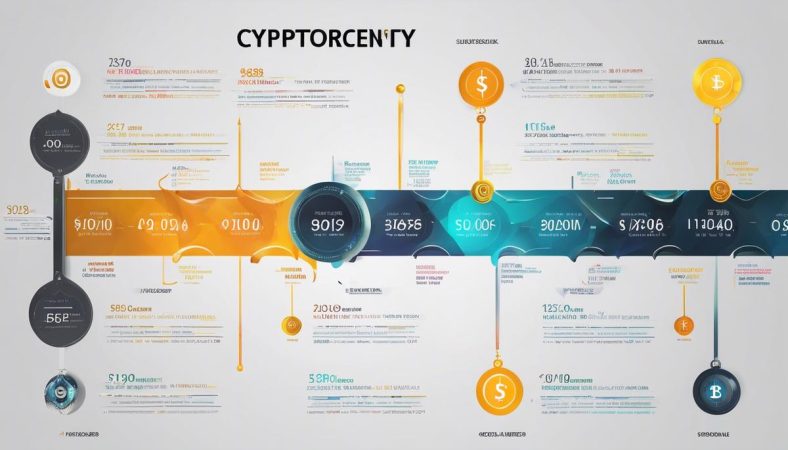In the ever-evolving world of finance, proprietary trading, or “prop trading,” represents a formidable blend of high risk and high reward. This complex sector involves financial institutions trading directly on their own accounts, aiming to leverage their considerable resources toward potentially significant returns. As a quintessential venture in the trading world, it is defined by both its challenges and its lucrative opportunities. Through the scope of this discussion, we delve into the operational intricacies of proprietary trading, the roles los prop traders play, the substantial rewards it offers, and the risks it carries. In further broadening our perspectives, we also examine the wave of emergent trends that are poised to shape the future of prop trading.
Understanding Proprietary Trading
Proprietary trading, or “prop trading”, is a term you might see thrown around in the finance world. But what exactly does it mean, and how does it function within financial institutions? If you’ve ever found yourself scratching your head wondering just that, we’re here to clarify!
First off, the term ‘proprietary’ gives us a hint. Coming from the word ‘property’, it speaks to ownership. So, proprietary trading means trading that’s conducted with an institution’s own funds, not on behalf of its clients. In layman’s terms, the bank is using its own money to make more money by purchasing and selling financial instruments.
This strategy branches off into a multitude of methods, allowing banks to diversify their avenues of profit. For instance, banks can participate in market-making activities. Here, they quote both a buy and a sell price in a financial instrument and can profit from the spread between the two.
Then there’s arbitrage, where firms exploit the price differential of a product on two different markets. Buy low on one market, sell high on another, and voilà! You’ve succeeded at arbitrage.
Also, within the rich tapestry of prop trading, there’s the speculative arena, wherein firms depend on investment professionals to predict future market trends accurately. If predictions come to fruition, major profits can be achieved. However, this does expose the firm to potential risk should the markets not perform as predicted.
If we delve into the history books, we’d discover that financial institutions haven’t always had a free hand in prop trading activities. After the 2008 financial crisis, regulations were put in place to curb banks’ propensity towards risk, ushering in the Volcker Rule. This prohibited banks from conducting certain investment activities with their own accounts, placing limitations on their prop trading activities. But after policy revisions in 2019, banks now have a little more room for their prop trading exploits, albeit under stricter prudential standards.
Yes, proprietary trading is complex, involving a blend of strategies, thorough market analysis, and extensive risk management procedures. Yet, the potential for profit makes it a tantalizing endeavor for financial institutions, a testament to the allure of financial markets.
Where there’s risk, there’s reward, and in the fast-paced world of financial trading, institutions worldwide are consistently innovating and adapting to optimize those rewards. Through a blend of calculated risks and innovative practices, proprietary trading continues to be a cornerstone of the trading industry, ensuring it remains an enticing landscape for the most courageous of financial institutions.
In sum, understanding proprietary trading can be an insightful window to understanding the intricate mechanics of modern financial systems. Its methods and operations are a testament to the creativity and adaptability inherent in the industry, continually striving to maximize profitability while skillfully navigating the oscillating currents of risk.

High Rewards of Proprietary Trading
While proprietary trading has long been recognized for its potential for significant profits, it is equally crucial to acknowledge the role of strategic decision-making and astute risk management in leveraging these rewards. The polychromatic tapestry of today’s business terrain necessitates a unique blend of entrepreneurial ethos and keen financial acumen for success in this sphere. And it’s this potent brew of resilience, strategic aptitude, and innovation that sets top-tier proprietary trading firms apart from their counterparts.
Consider, for a moment, the concept of “risk-reward ratio”. This critical metric reflects the potential profit an investor could realize from a trade, relative to the amount of risk undertaken. Intuitively, a high risk-reward ratio is desirable – it implies that the potential rewards offset the potential losses. In the volatile landscape of proprietary trading, striking this precarious balance is of paramount importance. Here’s where the role of a robust and dynamic risk management strategy becomes crucial.
This brings us full circle to the age-old adage, “diversify your portfolio”. One might wonder, how is this tenet applicable in the context of a single institution engaging in proprietary trading? Intriguingly, the principle holds water: spreading investments across a range of markets, trading strategies, and financial products can potentially buffer against lopsided losses. In the same vein, asymmetric bets – where potential gains far outweigh potential losses – can also be an ingenious approach to amplifying the returns.
That said, robust risk management forms only half the picture. Coupled with it, a clear-eyed focus on innovation opens the door to lucrative opportunities. While traditional trading strategies have their merits, it’s the ability to foresee market trends, devise novel trading methods, and utilize cutting-edge financial instruments that marks the difference between pedestrian returns and windfall profits.
Moreover, tapping into the power of financial technologies, or ‘fintech’, can drastically streamline trading operations, improving efficiency and reducing costs. Embracing machine learning algorithms, for instance, can enable predictive modeling of market trends, thereby fostering an environment where informed decisions take precedence over whimsical conjecture.
In essence, the specter of potentially jaw-dropping rewards in proprietary trading is, in large part, a function of thoughtful risk management, continual innovation, and nimble adaptation to ever-evolving financial landscapes. The towering edifice of a successful proprietary trading venture is thus built on these robust cornerstones, effecting a deft blend of entrepreneurial instinct and business savvy. It’s an arena where foresight, calculated risk-taking, and strategic decision-making merge seamlessly to maximize profitability in the face of uncertainty. It’s where the science of risk management meets the art of entrepreneurship to drive financial success. No doubt, it’s a thrilling ride – but it is one not designed for the faint-hearted.

Risks associated with Proprietary Trading
Shifting our focus onto the risks and challenges inherent in proprietary trading, these dynamic components necessitate a holistic understanding of the financial markets, internal and external factors influencing outcomes, as well as an advanced skill set in problem-solving.
One significantly daunting risk is market risk. Market risk signifies the potential losses an institution can face due to changes in the market factors such as interest rates, foreign exchange rates, equity prices, or commodity prices. Depending on the swing, these shifts can lead to negative outcomes for those engaged in proprietary trading.
Counterparty risk presents another challenge. It revolves around the possibility of another party in a financial transaction defaulting or failing to meet their contractual obligations. It places considerable importance on deciphering the dependability and creditworthiness of the entities involved.
Operational risk, commonly overlooked, can also lead to significant losses. These risks might stem from internal failings, such as flawed processes or system breakdowns, or external events like natural disasters or crises– essentially any event that can disrupt the smooth functioning of operations.
Mitigating these risks requires astute, proactive strategies. Ensuring strong risk management practices is vital. These processes are inherently multi-faceted: they include understanding the market dynamics and sensitivity to various risk factors, creating a robust investment framework, and continuously updating risk assessment and management models based on changing market conditions.
Diversification also plays a crucial role in risk mitigation. Spreading investments across a variety of financial instruments and markets can reduce potential losses from underperforming investments.
In the same vein, utilizing financial technologies (fintech) can enhance efficiency and precision in trading operations. From algorithmic trading to sophisticated analytics, fintech introduces tools to identify trading opportunities swiftly, manage risks efficiently, and optimize trading strategies.
The frequently changing financial environment underscores the importance of being adaptable and nimble. Actively monitoring regulatory changes, market trends, technological advancements, and global economic indicators helps keep trading strategies relevant and effective.
Lastly, maintaining an entrepreneurial spirit can tide traders over the challenges in proprietary trading. Not only does it stimulate innovation in trading strategies, but it also fosters a mindset of exploration and adaptation, essential in a field as unpredictable as this.
In conclusion, proprietary trading, with its potential for immense profits, also harbors substantial risks. Acute awareness of these risks, employing strong risk management practices, leveraging technology, staying adaptable, and nurturing an entrepreneurial spirit can pave the way to success in this field.

Emerging Trends in Proprietary Trading
Today, let’s probe into the budding trends in proprietary trading and how they’re carving the future direction of this industry.
Proprietary trading isn’t static – as market conditions fluctuate, new trends arise. One notable trend propelling changes in the proprietary trading landscape is the growing reliance on technology, notably artificial intelligence (AI) and machine learning (ML). These digital evolutions are revolutionizing the way trades are executed by offering real-time data analysis, prediction accuracy, and automated trading options.
What makes AI and ML so invincible? It’s their intrinsic ability to process colossal amounts of data at lightning fast speeds and their predictive power. With AI and ML, predicting future price movements and identifying market patterns becomes less daunting, enabling firms to make better informed trading decisions.
Another trend that’s reshaping the proprietary trading realm is the rise of decentralization in trading platforms, brought about by blockchain technology. This technology, often associated with cryptocurrencies, is creating a fully transparent and secure trading environment by eliminating a central point of failure and making transaction details visible to all participants, a radical shift from traditional trading norms.
As most of the world is moving toward sustainability, one can’t overlook the influence of Environmental, Social, and Governance (ESG) factors on proprietary trading. Forward-thinking proprietary traders are incorporating ESG factors into their strategies, recognizing that companies with solid ESG performances may offer more sustainable returns. Just as these values are seeping into consumers’ purchasing decisions, they are also impacting trading choices.
Lastly, the democratization of trading is a game-changer. Platforms like Robinhood are making trading accessible to everyone, driving an influx of retail traders into the market. This is pushing proprietary trading firms to adapt by diversifying their strategies and focusing more on providing value to traders through education and advanced trading tools.
All these trends echo one essential message – adaptation is key. As the financial landscape continues to change, evolve, and diversify, it will be the companies that can dynamically maintain pace with these changes that succeed. Be it technology, decentralization, ESG, or democratization, these trends serve as early signs of the opportunities brewing in the proprietary trading industry.
Seizing these opportunities requires a blend of entrepreneurial spirit, reactive agility, and business acumen – traits every successful proprietary trader must possess. In navigating the complex storms of the financial seas, originality, innovation, and a keen sense of the market are the compasses guiding the ship. As it sails through the waters of risk and reward, the horizon of prosperous trading awaits.

Indeed, proprietary trading is a dynamic component of the financial landscape, characterized by substantial rewards, high risks, and rapid evolution influenced by ever-changing market trends and regulatory landscapes. By understanding the underlying mechanisms, traders and investors can better navigate the inherent risks while maximizing the potential rewards. The exploration of the emerging trends showcases the progressive advancements, like AI and stringent regulations, that will continue to mold the future of prop trading. Hence, keeping pace with these trends is essential for those engaged in or aspiring to enter the captivating realm of proprietary trading. The constantly shifting narrative of prop trading necessitates an ongoing commitment to learning, calculated decision-making, and an unflinching attitude towards the ever-present market volatility.











